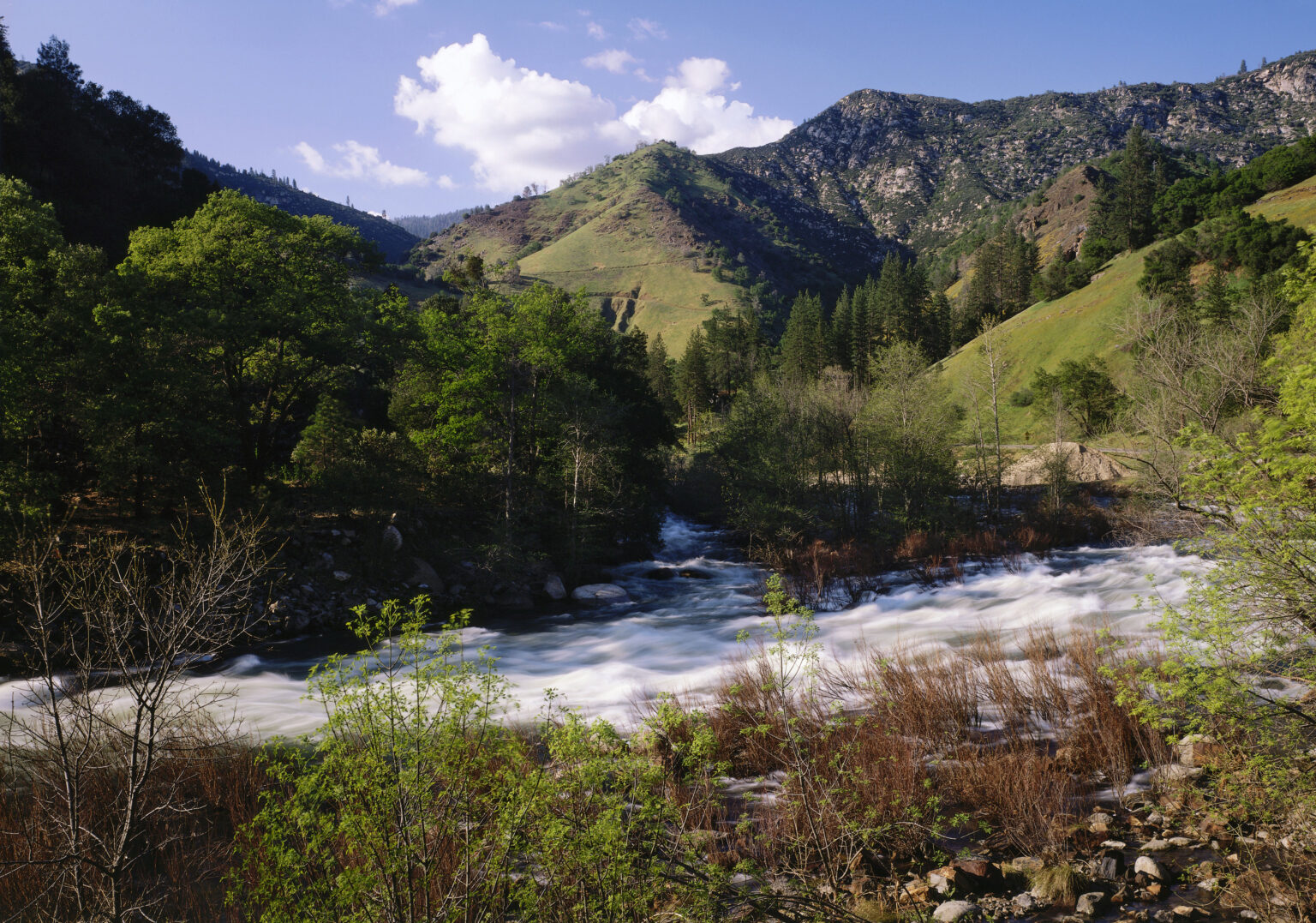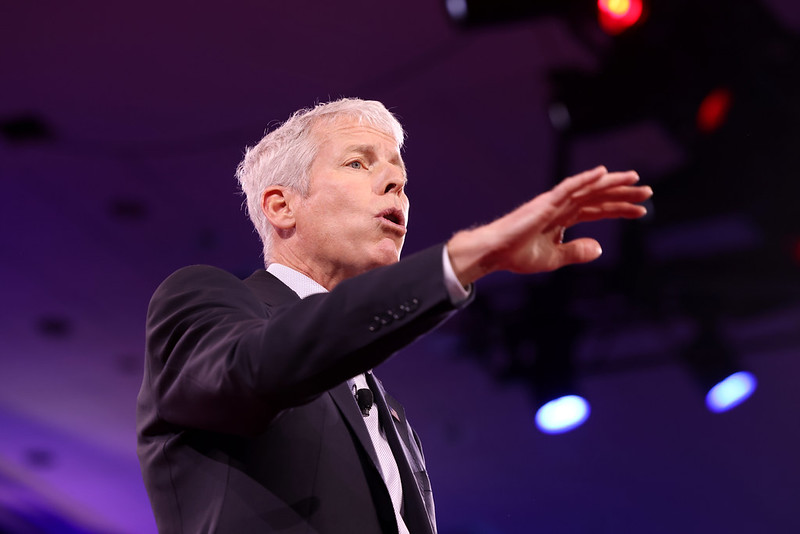Drax’s plans to source wood pellets from Californian forests have been shelved in what campaigners are hailing as an “historic victory”.
The Yorkshire-based biomass company, which operates the UK’s biggest wood-fired power station, set the project in motion to build two industrial plants in rural California, in partnership with Golden State Natural Resources (GSNR) last year.
Once built, the factories were set to produce a total of one million tonnes of pellets annually, which would be shipped to Europe and Asia and burnt to create “renewable” electricity. But at a Wednesday board meeting in Sacramento last week, GSNR announced that it was changing course. Citing “input” from thousands of public submissions, and “a shift in biomass market conditions”, the government-linked non profit said it would proceed with a “reduced scale project”, which would produce wood chips for the domestic market.
Drax’s plan to source wood from areas that encompass eight protected national forests had prompted a host of environmental concerns. Thousands of residents and experts from a cross-border coalition of 185 organisations had challenged the logic of burning high-carbon wood pellets for energy, as well as raising fears over air pollution for marginalised communities living close to the plants, and the impacts of wood-harvesting on the biodiversity and resilience of California’s wildfire-prone forests, which are home to endangered gray wolves.
Drax already operates 18 wood pellet plants across the U.S. and Canada, but the Memorandum Of Understanding (MoU) with GSNR, finalized in February last year, was the most concrete indication yet of Drax’s ambition to expand into California, a state with 33 million acres of forest.
In 2024, the Yorkshire power station received over £2 million in subsidies a day from the UK government to burn biomass classified as “renewable” under international accounting rules, based on the assumption, disputed by scientists and campaigners, that growing new trees can replace the wood lost through burning.
Earlier this year, the UK government announced it was halving its subsidies for Drax from 2027, and tightening sustainability rules around sourcing. Drax – which generates five percent of the UK’s electricity – maintains that its pellets are made from “sustainable biomass” generated from low-grade roundwood, or “residues” from sawmills and forests. BBC investigations have repeatedly shown Drax to be burning rare forest wood sourced from “no-go areas” in the Canadian province of British Columbia.
The company, which is the largest single source of carbon emissions in the UK, is looking to expand its global operations further. Its future rests on being able to bring down its carbon footprint using a controversial technology known as bioenergy, carbon capture and storage (BECCS), which aims to remove carbon dioxide produced by burning biomass, by capturing and storing the carbon underground.
“We spelled out the writing on the wall: GSNR’s biomass boondoggle is not welcome in California communities,” said Rita Vaughan Frost, forest advocate at the Natural Resources Defense Council.
“Californians raised their voices to show they want real clean energy and real solutions to wildfires, not to see their forests ransacked, and communities poisoned just to export climate-busting wood pellets overseas.”
Green Party co-leader Adrian Ramsay MP offered his congratulations to U.S. campaigners. “Burning wood is a terrible way to produce electricity,” he said. “Chopping down trees destroys nature while growing new trees is simply no replacement for the biodiversity lost in cutting down old forests.
“We need to be moving rapidly away from this country’s use of Drax as a source of electricity by using the subsidies it receives to invest in genuine renewables.”
‘Sigh of Relief’
Existing health inequalities would have been exacerbated by the proposed plants and export site, campaigners said.
DeSmog previously reported on the higher-than-average pollution burden, high rates of asthma and cardiovascular disease, and high poverty rate in Tuolumne County, where one of the proposed plants was due to be located in the foothills of the Central Sierra Nevada mountain range.
Communities living near the inland port of Stockton, where the pellets would have been shipped from, are some of the most disadvantaged in the state, and are already exposed to high rates of particulate matter.
Many campaigners also raised concerns around the risk of fire hazards from producing, handling and storing wood pellets – which would be sourced from within a 100-mile radius from the plants in Tuolumne and Lassen Counties. The production of pellets can release high volumes of sawdust and other harmful particulates that impact air quality.
Golden State Natural Resources says its forest management techniques reduce the risk of wildfires and that it maintains “stringent guardrails” to ensure the sourcing of materials for pellets is sustainable.
Mary Booth, director of the forest and climate campaigns group Partnership for Policy Integrity, which analysed GSNR’s claims around improving fire resilience, dismissed the company’s claims, describing them as “mostly arm-waving” and “unsupported by their own numbers”.
Gloria Alonso Cruz, environmental justice advocacy coordinator with Little Manila Rising said: “With this announcement, vulnerable communities in South Stockton can breathe a sigh of relief knowing we’ve protected our community from GSNR. We now turn our attention to its leadership — to demand commitment to development that does not threaten our community’s health.”
Betting on BECCS
Drax is yet to issue any public statement on the decision, and did not respond to DeSmog’s request for comment regarding the project or its future involvement in California.
However, there are signs that Drax is still hoping to build support for Bioenergy, Carbon Capture and Storage (BECCS) in the U.S., where it sees more opportunity for expansion.
Drax won planning permission to install the technology in the UK last year, but its bid to win a fresh round of subsidies from the UK government, estimated at £31.7 billion, is currently under review, with a final report due to be submitted in October. It has also lobbied California to be the site of a biomass carbon capture plant.
In September 2024, Drax earmarked $12.5 billion investment for BECCS expansion in the U.S. under its U.S. subsidiary Elimini. Drax told Reuters it was exploring opportunities to meet “soaring demand for both 24/7 renewable energy and high-integrity carbon removals”.
GSNR maintains that the company will still look to build plants in Tuolumne and Lassen County, to utilise their direct rail links. The paper lists a number of potential possible markets for wood chips, from green methanol production, as bioenergy fuel for BECCs schemes, Sustainable Aviation Fuel (SAF) and the manufacture of hydrogen.
In a letter to board members in June, GSNR President Patrick Blacklock claimed that switching from pellets to wood chip production would lower the project’s costs and “environmental footprint”, and may expedite the buildout.
A spokesperson for Golden State Natural Resources said that despite the decision to move away from wood pellet exports, its partnership with Drax was “still in place”. The framework MoU would allow the firm to explore “sustainable biomass opportunities, with a focus on advancing forest resilience and promoting green energy initiatives worldwide,” they said.
Gary Hughes, co-director and U.S. coordinator at Biofuelwatch, described the campaign’s success as “monumental”.
“Bringing the wood pellet sector to California would have been akin to the pulp industry getting started here in the 1960s and polluting with impunity for decades,” he said, adding that GSNR’s “chipping vision” was a regression to existing timber industry practice.
“Making one million tons of wood pellets every year to send them overseas to burn would have been a massive pivot in California,” he said. “We stopped that disaster from happening.”
The fight was still on, added Shaye Wolf, climate science director at the nonprofit Center for Biological Diversity. “The new proposal to sacrifice forests and communities to make dirty biomass products here in California is still bad for the climate, public health and wildlife,” they said. “We’ll continue to fight to protect our forests from being industrialized for corporate profit.”
Subscribe to our newsletter
Stay up to date with DeSmog news and alerts






